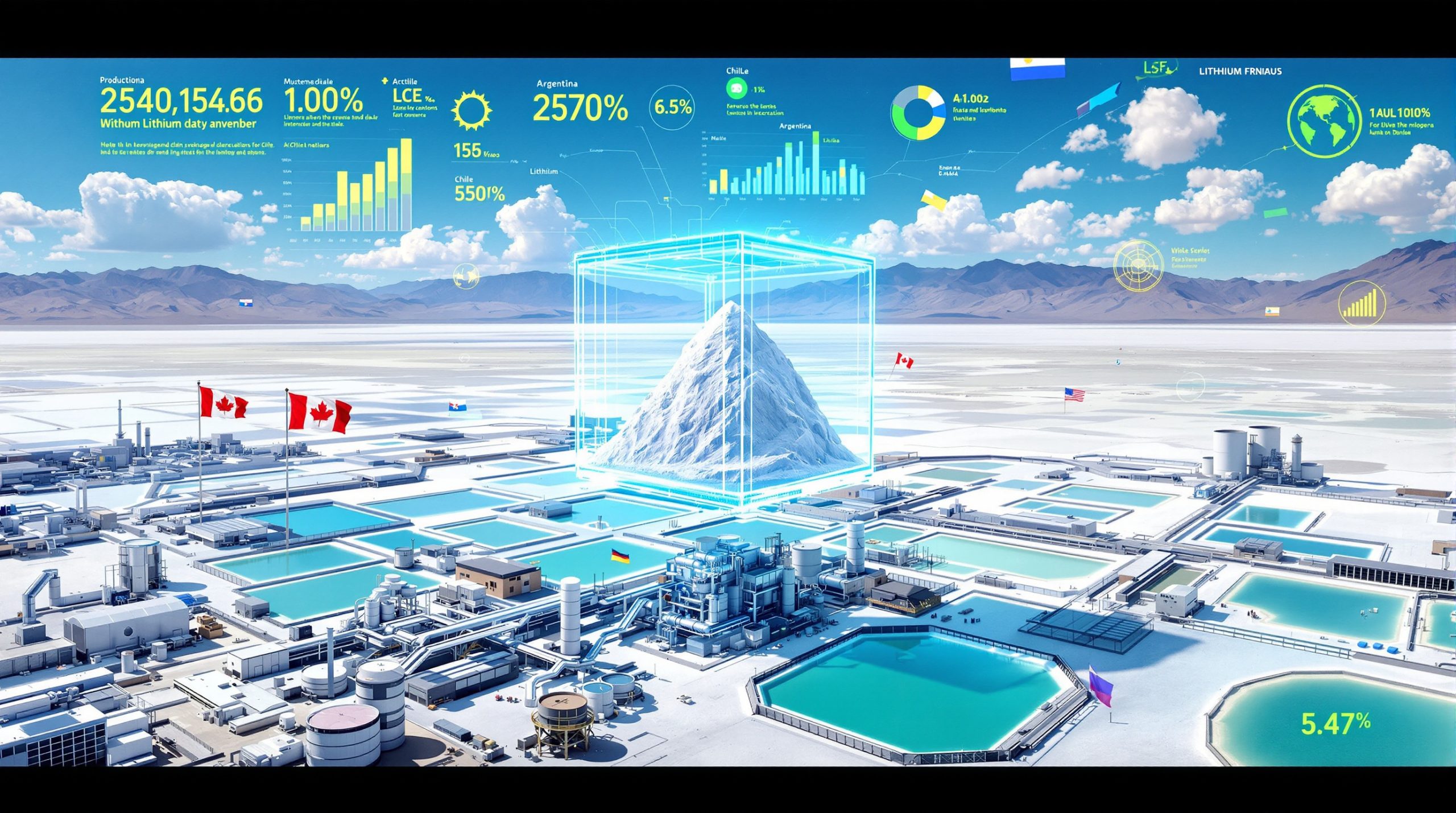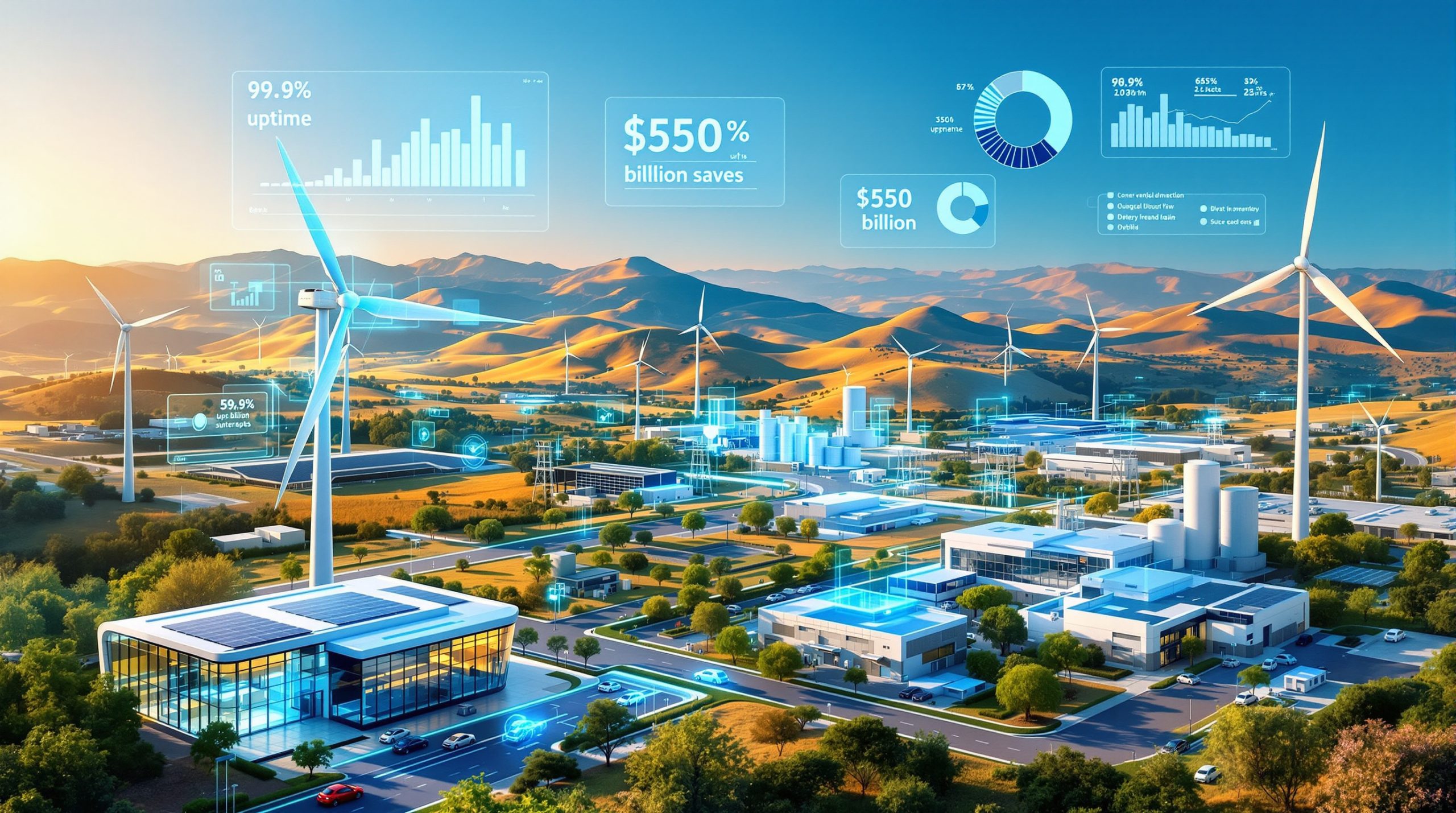Glencore's Path to 1 Million Tons of Copper Production in Argentina
Argentina stands at the precipice of a mining revolution. After years of dormancy in copper production, the country is poised to emerge as a significant player in the global copper market, largely due to Glencore's ambitious development strategy. With a vision that spans the next decade and beyond, Glencore aims to establish Argentina as a cornerstone of its global copper portfolio.
According to Martin Perez de Solay, Glencore's Argentina CEO, the company expects to produce an impressive 1 million tons of copper in Argentina over the next 10-15 years. This ambitious target comes at a time when the global demand for copper continues to rise, driven by renewable energy infrastructure and electric vehicle production.
"Argentina could supply the global copper market with 2 million tons of copper in 10 years," stated Perez de Solay, highlighting the country's untapped potential. This would represent a remarkable transformation for a nation that hasn't produced copper since the closure of the Bajo de la Alumbrera mine in 2018.
While neighboring Chile and Peru have traditionally dominated South American copper production, industry officials suggest Argentina could become another major producer in the region, diversifying the continent's copper output and potentially alleviating supply concerns in global markets.
The Cornerstone Projects Driving Glencore's Copper Ambitions
At the heart of Glencore's strategy lie two flagship projects: El Pachon and Agua Rica. Together, these developments are expected to produce approximately 500,000 metric tons of copper when fully operational—representing half of Glencore's overall production target for Argentina.
Recognizing the significance of these projects, Glencore has submitted applications to Argentina's Large Investment Incentive Regime (RIGI), seeking favorable conditions to support the substantial capital investments required. The RIGI framework offers special benefits for major investment projects, providing critical economic incentives that could determine the viability of large-scale copper developments.
El Pachon, located in San Juan province near the Chilean border, represents one of Argentina's largest undeveloped copper resources. The project has undergone multiple ownership changes over decades before landing in Glencore copper operations, where it now forms a central pillar of the company's copper strategy.
Agua Rica, situated in Catamarca province, complements El Pachon in Glencore's development pipeline. The combined output from these two properties will establish the foundation upon which Glencore intends to build its copper empire in Argentina.
Development Timeline and Implementation Challenges
While specific timeline details remain confidential, industry observers anticipate a phased development approach. Initial construction activities could begin within the next few years, subject to regulatory approvals and investment incentives. Full production capacity would likely be achieved gradually, with ramp-up periods extending several years after initial operations commence.
The pathway to full production presents numerous challenges, including securing adequate water resources in arid regions, developing power infrastructure, and establishing efficient logistics networks to transport copper concentrates to international markets.
Argentina's Emergence as a Copper Production Hub
Argentina's copper potential has remained largely untapped despite the country sharing the prolific Andean copper belt with Chile and Peru. This geological formation, stretching along South America's western edge, hosts some of the world's largest copper deposits.
The country's mining sector has historically focused on gold, silver, and lithium, with copper taking a secondary role. However, geological surveys indicate Argentina possesses significant copper resources that could support multiple world-class mining operations.
Geological Advantages and Resource Potential
The Argentine portion of the Andes mountains contains numerous porphyry copper deposits—the same geological formations that have made Chile the world's leading copper producer. These deposits typically offer economies of scale that support large-scale, long-life mining operations.
What makes Argentina particularly interesting to miners like Glencore is the relative lack of exploration compared to neighboring countries. While Chile's copper resources have been extensively mapped and developed, Argentina's potential remains comparatively unexplored, suggesting opportunities for significant discoveries beyond currently identified resources.
Evolving Investment Climate
Argentina's government has recognized mining's potential economic contribution and has been working to create a more attractive investment environment. The introduction of the RIGI framework represents a significant step toward providing the stability and incentives necessary for multi-billion-dollar mining investments.
Beyond Glencore, other major mining companies including BHP have announced plans to invest in Argentina's copper sector, signaling growing international confidence in the country's mining potential. This competitive interest could accelerate infrastructure development and regulatory improvements that benefit the entire sector.
Market Dynamics Driving Copper Investment
The global copper market faces a potential supply deficit in coming years as demand growth outpaces new production. This fundamental imbalance creates strategic opportunities for mining companies with development-ready copper projects.
Copper's Role in the Energy Transition
Copper's exceptional electrical conductivity makes it irreplaceable in numerous applications central to decarbonization efforts:
- Electric vehicles require 2-4 times more copper than conventional vehicles
- Wind turbines use approximately 2.5-6.4 tons of copper per MW of capacity
- Solar power systems need about 5.5 tons of copper per MW
- Electricity grid expansion and modernization demands massive copper quantities
This convergence of applications creates what industry analysts call a "supercycle" for copper demand, potentially supporting higher copper price insights for years to come.
Strategic Supply Considerations
Glencore's investment in Argentina reflects a broader industry trend of geographical diversification. Traditional copper-producing regions face challenges including:
- Declining ore grades in mature mining districts
- Water scarcity in established copper regions
- Increasing regulatory restrictions and higher royalty demands
- Political uncertainty in some producing countries
By developing Argentina's copper potential, Glencore not only secures additional production capacity but also diversifies its geopolitical risk profile, potentially creating competitive advantages in the global copper outlook.
Glencore's Strategic Positioning Among Mining Giants
Glencore's ambitious plans position the company as a first mover in Argentina's copper sector revival. While BHP has announced intentions to invest in Argentina, Glencore's advancement of El Pachon and Agua Rica projects gives it a timing advantage in the region.
Competitive Landscape in South American Copper
South America remains the world's most important copper-producing region, with Chile and Peru contributing approximately 40% of global supply. However, both countries face challenges:
- Chile's declining ore grades require deeper, more expensive mining
- Water scarcity in Chile's Atacama region creates operational constraints
- Peru's political instability has delayed some mining investments
- Both countries have discussed higher taxation on mining operations
These factors create an opening for Argentina to emerge as an alternative investment destination for copper miners seeking growth opportunities.
Strategic Partnerships for Project Success
Developing large-scale mining projects requires collaboration among multiple stakeholders. Glencore's strategy likely includes:
- Working with provincial and federal government agencies to streamline permitting
- Engaging local communities through employment and development programs
- Partnering with infrastructure providers for power and transportation solutions
- Potentially forming joint ventures to share development costs and risks
The success of these partnerships will significantly influence Glencore's ability to meet its ambitious production targets.
Overcoming Development Hurdles
The path to achieving 1 million tons of copper production in Argentina presents numerous challenges that Glencore must navigate successfully.
Infrastructure Requirements
Argentina's mining regions lack some of the essential infrastructure needed for large-scale copper production:
- Power supply: Copper processing facilities require substantial electricity
- Water management: Mining operations need reliable water sources in often arid regions
- Transportation corridors: Moving copper concentrates to ports efficiently
- Port facilities: Specialized loading equipment for mineral exports
Developing this infrastructure alongside mining operations adds complexity and capital requirements to Glencore's projects.
Regulatory and Social Considerations
Beyond physical infrastructure, Glencore must navigate Argentina's regulatory landscape and social context:
- Environmental permitting processes can be lengthy and complex
- Community acceptance is essential for project development
- Provincial governments hold significant authority over mining operations
- Economic volatility can complicate long-term investment planning
The company's success in addressing these factors will determine how quickly it can progress from regulatory approval to copper production.
Financial Considerations
Developing world-class copper mines requires substantial capital investment—often billions of dollars per project. Glencore's financial strategy must account for:
- Initial capital expenditures for mine development
- Ongoing operational costs in Argentina's economic environment
- Currency risk management in a historically volatile economy
- Securing favorable tax and royalty terms through RIGI and other mechanisms
Disclaimer: The development timeline and economic factors discussed represent analysis based on publicly available information. Actual project implementation may vary based on market conditions, regulatory approvals, and company decisions.
Economic Transformation Through Copper Development
If successful, Glencore's copper strategy could fundamentally transform Argentina's mining sector and broader economy.
Export and Revenue Potential
Copper production at the scale envisioned by Glencore would create a significant new export industry for Argentina:
- At current copper prices, 1 million tons would represent approximately $9-10 billion in annual export value
- Tax revenues and royalties would provide substantial government income
- Foreign exchange earnings would strengthen Argentina's macroeconomic position
- Diversification away from agricultural exports would reduce economic volatility
Employment and Industrial Development
The development of a copper industry extends beyond the mines themselves:
- Direct employment at mining operations (estimated 5,000-7,000 jobs)
- Indirect employment through suppliers and services (potentially 3-4x direct jobs)
- Skills development in engineering, geology, and technical trades
- Growth of supporting industries including equipment maintenance, logistics, and environmental services
These economic benefits explain the government's interest in facilitating copper sector development through programs like RIGI.
Future Outlook for Argentina's Copper Industry
The successful implementation of Glencore's strategy would mark just the beginning of Argentina's emergence as a copper producer. The country's geological potential suggests possibilities beyond even the ambitious targets currently discussed.
Long-term Production Scenarios
Glencore's development approach appears to follow a logical progression:
- Initial phase: Development of El Pachon and Agua Rica (500,000 tons)
- Secondary phase: Additional project development to reach 1 million ton target
- Expansion opportunities: Potential resource growth through mineral exploration trends
- Optimization initiatives: Improving recovery rates and operational efficiency
This phased approach allows for adaptation to market conditions while maintaining progress toward long-term goals.
Argentina's Place in the Global Copper Landscape
If Argentina achieves the 2 million ton production potential referenced by industry officials (including Glencore's 1 million ton contribution), it would represent approximately:
- 8-10% of current global copper production
- The third or fourth largest copper-producing country globally
- A significant diversification of global copper supply
- A new counterbalance to traditional producers Chile and Peru
Such an outcome would fundamentally alter South America's mining landscape and potentially influence global copper market dynamics for decades to come.
FAQ: Glencore's Copper Projects in Argentina
What is the timeline for Glencore's copper projects in Argentina?
While specific development timelines remain confidential, industry analysts suggest El Pachon and Agua Rica could begin construction within the next few years, subject to regulatory approvals and investment incentives. The overall production target of 1 million tons is framed within a 10-15 year horizon, indicating a gradual build-up of capacity.
How does Argentina compare to Chile and Peru in copper production?
Currently, Argentina produces no copper following the 2018 closure of Bajo de la Alumbrera mine. In contrast, Chile produces approximately 5.3 million tons annually while Peru produces around 2.2 million tons. However, Argentina shares the same Andean geological belt that has made its neighbors major producers, suggesting significant untapped potential.
What government incentives is Glencore seeking for its copper projects?
Glencore has applied to Argentina's Large Investment Incentive Regime (RIGI), which provides special benefits for major investment projects. According to Australian Mining, these incentives typically include tax stability, reduced import duties on equipment, preferential exchange rates for dividends, and other financial mechanisms designed to improve project economics and reduce investment risk.
How significant is the 1 million ton production target in global terms?
A 1 million ton copper production capacity would represent approximately 4-5% of current global copper production. This volume would place Argentina among the world's top copper-producing nations and make Glencore's Argentine operations a significant contributor to global supply.
Note for investors: While Glencore's copper investment insight in Argentina presents potentially significant opportunities, development timelines for major mining projects often extend beyond initial estimates due to permitting complexities, technical challenges, and changing market conditions.
The Strategic Importance to Glencore's Global Portfolio
For Glencore, success in Argentina represents more than just production volume—it signifies a strategic repositioning within the global copper industry.
Portfolio Diversification Benefits
Glencore's existing copper operations span multiple continents, including significant assets in Africa, Australia, and South America. Adding substantial Argentine production would:
- Reduce dependence on any single operating region
- Balance political and regulatory risk across diverse jurisdictions
- Create operational synergies through knowledge transfer between regions
- Establish Glencore as a leader in an emerging copper province
This geographical diversification provides resilience against regional disruptions while positioning the company to capture growth opportunities.
Long-term Value Creation Potential
The development of Argentina's copper resources represents a multi-decade opportunity for Glencore:
- Initial mine lives typically extend 20+ years for large porphyry copper deposits
- Exploration success often extends operations well beyond initial projections
- Processing facilities and infrastructure create platforms for regional development
- Early positioning in an emerging copper province offers competitive advantages
These factors align with the long-term investment horizons characteristic of major mining developments and Glencore's corporate strategy.
In conclusion, Glencore targets 1Mt of copper in Argentina over coming decade represents a transformative vision for both the company and the country. While significant challenges remain in translating geological potential into operational reality, the convergence of Argentina's resources, government support, and favorable copper market fundamentals creates a compelling opportunity. The coming decade will determine whether this vision materializes into Argentina's emergence as a global copper powerhouse.
Looking to Gain an Edge in Mining Stock Investments?
Don't miss the next major ASX mineral discovery announcement – Discovery Alert's proprietary Discovery IQ model instantly identifies high-potential mining opportunities before the market moves. Explore how significant discoveries have historically generated substantial returns by visiting the dedicated discoveries page and position yourself ahead of the market.




